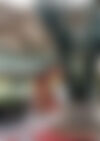The challenge
Working in the middle of an occupied building without direct external access was challenging; and not only was the team working in a live environment, but it was also a highly sensitive medical environment. They all had to coexist. It was critical that construction didn’t interrupt NZ Blood’s operations.
The existing building envelope was neither plumb nor square, but the project team worked together to address the problems and find solutions. Additional tolerances were built into the structure. Q’s steel contractor worked closely with the engineering team and exchanged the fabrication model dozens of times to ensure that any changes between the as-built drawings and the physical building were accounted for before fabrication started.
The engineers visited the factory during the fabrication process and inspected subassemblies – specifically a couple of the centre nodes – before they were welded onto the main members; plus our steel fabricator conducted a trial assembly of the atrium in their workshop, which the engineer was able to inspect. This ensured when it all came to site, we weren’t side-tracked reacting to problems and could focus on a swift installation with as little disruption to occupants as possible.
Pre-cambers were designed into the steelwork to allow for 90mm deflections on installation. The team needed to start with it out of plumb and account for the building not being square to start with. Effectively, the team built the structure lopsided so when it finished it was straight.
How we made a difference
Originally planned as a timber structure, the design changed to structural steel. The team had to choose between either using timber and changing the aesthetic, or changing the material and keeping the aesthetic. It came down to material properties.
Timber would have required large member sizes, which would have altered the aesthetic substantially. By using steel sections, the design could achieve the required strength and stiffness, and retain the look and feel of the original concept.
The use of steel allowed the team to achieve the atrium’s complex geometry, which consists of contorted load paths. The biggest challenge for the team was trying to thread through the structure’s hidden supports.
There were very narrow architectural envelopes to get to the existing structure, so all of the exposed steelwork had to be as thin, and look as clean and simple, as possible. The most difficult thing was working to strict height limits and trying to find a solution where the steelwork could all be threaded through without letting on that it was actually supported further out.
About 25 percent of the support structure is hidden in the existing gutter islands, which form part of the existing structure. A 1.5m ‘eyelid’ wraps all the way around the building, as the gutter is artificially wide for aesthetic purposes. The structural steel supports drop down inside the eyelids, out to the main grid lines where the primary steel for the main structure is.
Where the steel goes down through the eyelids, there is a structural depth of only 200mm – trying to slot down inside that was quite challenging.
The existing building envelope was neither plumb nor square. To address this, additional tolerances were built into the structure. The engineers also worked closely with the steel contractor. They exchanged the fabrication model dozens of times to ensure that any changes between the as-built drawings and the physical building were accounted for before fabrication started.
Having a local structural steel contractor on board allowed the engineering team to respond fluidly to issues as they arose. Working with locals meant that the team could visit the factory during the fabrication process and inspect subassemblies – specifically a couple of the centre nodes – before they were welded onto the main members. It wouldn’t have been possible to do so had it simply been received as fully fabricated elements.
Structural steel contractor Global Engineering conducted a trial assembly of the atrium in its workshop, which the engineer was able to inspect. With an overseas’ supplier, there wouldn’t have been an opportunity to check the final product and make sure that each party had understood the other correctly.
The details
The project for NZ Blood was part of a master plan, carefully delivered over several years in a staged approach to transform their Epsom facility while maintaining vitally important blood donation and affiliated services throughout the construction period.
The primary works focussed on installation of an atrium roof over the central compound of the existing building to create the new heart at the centre of the building, housing cafeteria, and shared spaces.
Originally planned as a timber structure, the design soon changed to structural steel to accommodate the complex geometries and the desired spans. The complex installation sequencing of the atrium structure was such that the entire roof was to “float”, unfixed, on the strengthened existing structure until such time as all roof fixtures were installed. Only then could the tension rods be adjusted, and load towers lowered for the full load to transfer to the main building. This was because the entire structure was effectively self-supporting in tension.
The project has won multiple awards and the overall outcome is a credit to the whole project team.
































